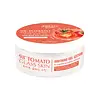What's inside
What's inside
 Key Ingredients
Key Ingredients

 Benefits
Benefits

 Concerns
Concerns

No concerns
 Ingredients Side-by-side
Ingredients Side-by-side

Aloe Barbadensis Leaf Water
MaskingGlycerin
Humectant1,2-Hexanediol
Skin ConditioningTriethanolamine
BufferingCarbomer
Emulsion StabilisingPhenoxyethanol
PreservativeWater
Skin ConditioningPEG-60 Hydrogenated Castor Oil
EmulsifyingEthylhexylglycerin
Skin ConditioningDisodium EDTA
Cyclohexane
SolventButylene Glycol
HumectantSnail Secretion Filtrate
Skin ConditioningSodium Hyaluronate
HumectantAdansonia Digitata Seed Extract
Skin ConditioningHouttuynia Cordata Extract
Skin ConditioningCentella Asiatica Extract
CleansingPolygonum Cuspidatum Root Extract
AntioxidantAnthemis Nobilis Flower Extract
MaskingCamellia Sinensis Leaf Extract
AntimicrobialGlycyrrhiza Glabra Root Extract
BleachingRosmarinus Officinalis Leaf Extract
AntimicrobialScutellaria Baicalensis Root Extract
AstringentAloe Barbadensis Leaf Water, Glycerin, 1,2-Hexanediol, Triethanolamine, Carbomer, Phenoxyethanol, Water, PEG-60 Hydrogenated Castor Oil, Ethylhexylglycerin, Disodium EDTA, Cyclohexane, Butylene Glycol, Snail Secretion Filtrate, Sodium Hyaluronate, Adansonia Digitata Seed Extract, Houttuynia Cordata Extract, Centella Asiatica Extract, Polygonum Cuspidatum Root Extract, Anthemis Nobilis Flower Extract, Camellia Sinensis Leaf Extract, Glycyrrhiza Glabra Root Extract, Rosmarinus Officinalis Leaf Extract, Scutellaria Baicalensis Root Extract
Solanum Lycopersicum Fruit Extract
AntioxidantWater
Skin ConditioningGlycerin
HumectantPropylene Glycol
HumectantGlyceryl Acrylate/Acrylic Acid Copolymer
HumectantSodium Hyaluronate
HumectantButylene Glycol
HumectantGlyceryl Stearate
EmollientPEG-100 Stearate
Stearic Acid
CleansingButyrospermum Parkii Butter
Skin ConditioningCarbomer
Emulsion StabilisingDimethicone
EmollientTriethanolamine
BufferingPhenoxyethanol
PreservativeChlorphenesin
AntimicrobialSorbitan Sesquioleate
EmulsifyingCaprylyl Glycol
EmollientParfum
MaskingPolysorbate 60
EmulsifyingDisodium EDTA
Panthenol
Skin ConditioningTocopheryl Acetate
AntioxidantAscorbic Acid
AntioxidantSolanum Lycopersicum Fruit Extract, Water, Glycerin, Propylene Glycol, Glyceryl Acrylate/Acrylic Acid Copolymer, Sodium Hyaluronate, Butylene Glycol, Glyceryl Stearate, PEG-100 Stearate, Stearic Acid, Butyrospermum Parkii Butter, Carbomer, Dimethicone, Triethanolamine, Phenoxyethanol, Chlorphenesin, Sorbitan Sesquioleate, Caprylyl Glycol, Parfum, Polysorbate 60, Disodium EDTA, Panthenol, Tocopheryl Acetate, Ascorbic Acid
 Reviews
Reviews

Ingredients Explained
These ingredients are found in both products.
Ingredients higher up in an ingredient list are typically present in a larger amount.
Butylene Glycol (or BG) is used within cosmetic products for a few different reasons:
Overall, Butylene Glycol is a safe and well-rounded ingredient that works well with other ingredients.
Though this ingredient works well with most skin types, some people with sensitive skin may experience a reaction such as allergic rashes, closed comedones, or itchiness.
Learn more about Butylene GlycolCarbomer is a polymer of acrylic acid. Its main role is to create a gel consistency.
A high amount of carbomer can cause pilling or balling up of products. Don't worry, most products contain 1% or less of carbomer.
Disodium EDTA plays a role in making products more stable by aiding other preservatives.
It is a chelating agent, meaning it neutralizes metal ions that may be found in a product.
Disodium EDTA is a salt of edetic acid and is found to be safe in cosmetic ingredients.
Learn more about Disodium EDTAGlycerin is already naturally found in your skin. It helps moisturize and protect your skin.
A study from 2016 found glycerin to be more effective as a humectant than AHAs and hyaluronic acid.
As a humectant, it helps the skin stay hydrated by pulling moisture to your skin. The low molecular weight of glycerin allows it to pull moisture into the deeper layers of your skin.
Hydrated skin improves your skin barrier; Your skin barrier helps protect against irritants and bacteria.
Glycerin has also been found to have antimicrobial and antiviral properties. Due to these properties, glycerin is often used in wound and burn treatments.
In cosmetics, glycerin is usually derived from plants such as soybean or palm. However, it can also be sourced from animals, such as tallow or animal fat.
This ingredient is organic, colorless, odorless, and non-toxic.
Glycerin is the name for this ingredient in American English. British English uses Glycerol/Glycerine.
Learn more about GlycerinPhenoxyethanol is a preservative that has germicide, antimicrobial, and aromatic properties. Studies show that phenoxyethanol can prevent microbial growth. By itself, it has a scent that is similar to that of a rose.
It's often used in formulations along with Caprylyl Glycol to preserve the shelf life of products.
Sodium Hyaluronate is hyaluronic acid's salt form. It is commonly derived from the sodium salt of hyaluronic acid.
Like hyaluronic acid, it is great at holding water and acts as a humectant. This makes it a great skin hydrating ingredient.
Sodium Hyaluronate is naturally occurring in our bodies and is mostly found in eye fluid and joints.
These are some other common types of Hyaluronic Acid:
Learn more about Sodium HyaluronateTriethanolamine is an emulsifier and pH adjuster. It is created using ethylene oxide and ammonia. This gives Triethanolamine a nitrogen core and a similar scent to ammonia.
As an emulsifier, it prevents ingredients from separating and enhances texture by adding volume to a product.
PH adjusters are common in cosmetic products. The pH of a product can affect the effectiveness of other ingredients. A product with a high pH may also irritate the skin.
Learn more about TriethanolamineWater. It's the most common cosmetic ingredient of all. You'll usually see it at the top of ingredient lists, meaning that it makes up the largest part of the product.
So why is it so popular? Water most often acts as a solvent - this means that it helps dissolve other ingredients into the formulation.
You'll also recognize water as that liquid we all need to stay alive. If you see this, drink a glass of water. Stay hydrated!
Learn more about Water